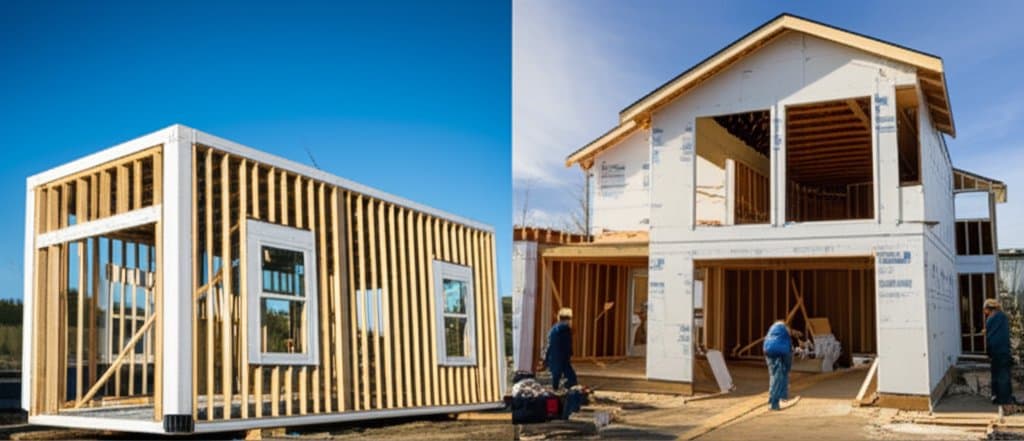Plan Your Home Office Addition: Costs and Strategies for 2025
Working from home has become a permanent fixture for many, and a dedicated office space can significantly enhance comfort, focus, and even your property's market value. If you are considering a home office addition in 2025, understanding the financial scope and key planning elements will help you allocate resources wisely and make informed choices that align with your needs.
Cost Overview for Home Office Additions
On average, constructing a home office addition ranges from $18,000 to $45,000, with most homeowners landing around $30,000 for a mid-sized project. Several factors drive these numbers, and knowing them upfront allows for better budgeting:
- Size of the space: Larger areas require more materials and labor, directly increasing expenses.
- Type of build: A simple bump-out tied to your existing structure costs less than a standalone unit.
- Material selections: Choices like hardwood flooring, expansive windows, or custom shelving push costs higher.
- Labor and regulatory fees: Professional services and necessary permits often make up 40 to 60 percent of the total.
Breaking Down Costs by Size and Structure
The square footage of your planned office heavily influences the final price tag. Here is a detailed look at how costs scale with size:
- Small office (80 to 120 square feet): Expect to spend between $18,000 and $25,000. This size accommodates a desk, chair, and minimal storage, ideal for solo work.
- Medium office (150 to 200 square feet): Budget $25,000 to $35,000 for a space that includes room for additional seating or larger furniture setups.
- Large office (250 to 300 square feet): Costs range from $35,000 to $45,000, offering capacity for multiple work zones or built-in features.
For those opting for a detached office structure, anticipate expenses between $40,000 and $65,000. The higher price accounts for independent foundations, utility connections, and weatherproofing needs.
Professional Services Versus DIY Efforts
Hiring a contractor generally runs $100 to $200 per square foot, covering essential tasks like framing, electrical installations, and ensuring compliance with building codes. In contrast, a DIY approach might lower costs to $60 to $100 per square foot, but only if you possess relevant skills. Even experienced individuals often need to outsource specialized work like plumbing or wiring.
For most, engaging a professional offers peace of mind through guaranteed safety and adherence to regulations. Reserve DIY tasks for non-structural elements, such as painting or assembling furniture, to save money without risking quality.
Hidden Expenses to Account For
Beyond the basics, several additional costs can impact your budget if not planned for:
- Permits and local fees: These vary by area, typically ranging from $500 to $2,500.
- Foundation requirements: A slab foundation might cost $5,000 to $10,000, while integrating with existing structures could be pricier.
- Roof extensions: Connecting to your current roof adds $3,000 to $8,000.
- Electrical and internet setup: Allocate $1,000 to $3,500 for outlets, lighting, and connectivity.
- Heating and cooling systems: Extending HVAC can cost $2,000 to $5,000.
- Windows and entry points: High-efficiency options range from $700 to $2,500 each.
- Finishing touches: Flooring costs $5 to $15 per square foot, while drywall and paint add smaller per-square-foot fees.
Smart Ways to Reduce Expenses
Strategic decisions can trim your budget without sacrificing functionality. Consider building on an existing foundation to minimize excavation costs, or opt for a compact layout with efficient storage solutions. Standard-sized windows and doors often cost less than custom designs, and selecting durable, mid-tier materials balances affordability with longevity. Taking on simpler tasks like painting or furnishing yourself also helps keep expenses in check.
Maximizing Return on Investment
A thoughtfully designed home office not only improves daily productivity but also boosts resale potential. Homeowners often recover 50 to 65 percent of their investment when selling, especially if the space integrates well with the home’s overall aesthetic. Versatility adds value too: design the office to serve as a guest room or creative studio if needed. Prioritizing energy-efficient features and quality finishes further enhances appeal to future buyers.
Navigating Your Project Path
Embarking on a home office addition requires clear priorities and a realistic budget. Begin by assessing whether converting an existing room, which often costs between $5,000 and $15,000, might suffice compared to a full build. Define the space’s purpose and size needs, then gather detailed quotes from licensed contractors to compare expertise and pricing. With deliberate planning and balanced choices, you can craft a workspace that elevates both your routine and your home’s lasting worth.





